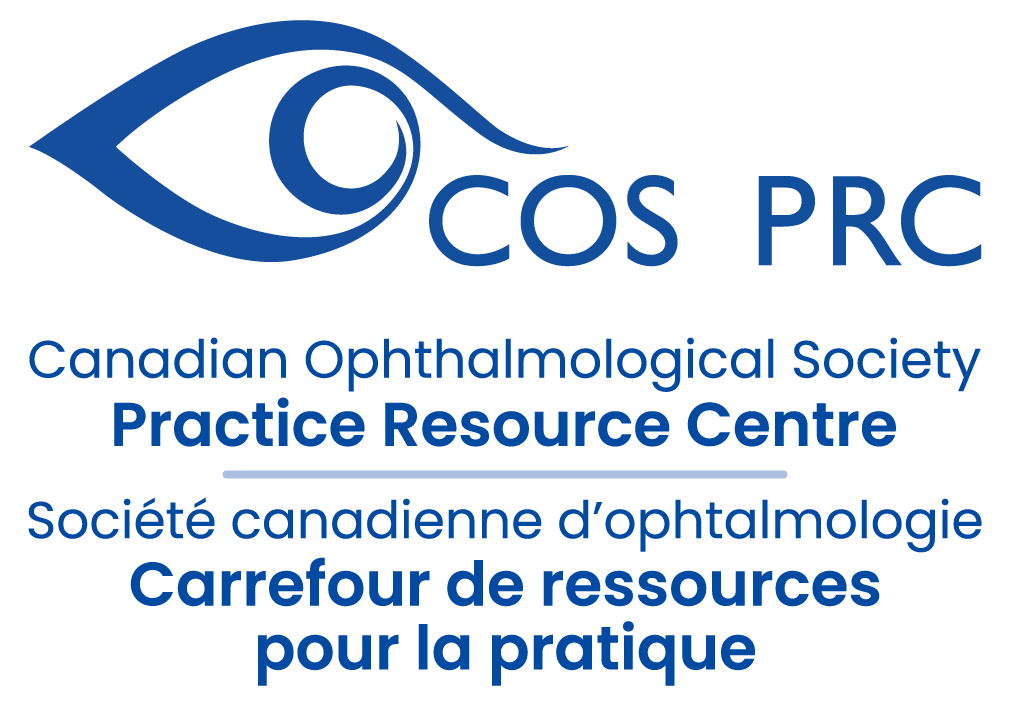PCC Rounds – So you Ordered a Corneal Transplant and Anterior Segment Surgery Combo… Would You Like Fries With That?!
Joint International Rounds between Precision Cornea Centre (Ottawa, Canada) and University of Toronto (Toronto, Canada)
Topic: So you ordered a corneal transplant and anterior segment surgery combo… would you like fries with that?!
Presenter: Joshua Teichman, MD
Date: Tuesday September 8th, 2020
Time: 5:00pm – 6:00 pm (EDT, UTC -4)
Registration: https://webinar.ringcentral.com/webinar/register/WN_kTEJf2FkTmmBeUGuLyApOw
Ottawa Lead: Kashif Baig, MD
Toronto Lead: Joshua Teichman, MD
The Precision Cornea Centre International Rounds is a self-approved group learning activity (Section 1) as defined by the Maintenance of Certification Program of the Royal College of Physicians and Surgeons of Canada.
Learning objectives: Learning objectives: At the end of this session, participants should be able to:
1. Group complex anterior segment/transplant surgeries into patterns that are best managed in similar ways; and
2. Identify the “rules” of complex anterior segment/transplant surgery that allow for consistent results.
2020 COS Annual Meeting and Exhibition – Archives
The 2020 COS Annual Meeting & Exhibition took place online as a virtual meeting from June 26 – 28, 2020. Through the links below you can access legacy materials from the conference, content that remains relevant to your practice. Review session recordings, ePosters, Surgical Videos, and browse recorded paper presentations. Earn Section 3 Credits through the two accredited Self-Assessment Programs developed from the two recorded co-developed symposia: Retina Infinity War: Is Bone-Dry Our Endgame and AMD/DME Special Report: Fluid for Thought.
Section 3 Accredited Self-Assessment Programs – Visit the website
Earn section 3 credits by participating in these two self-assessment programs based on the recorded co-developed symposia:
ePosters and Surgical Videos – Visit the website
Claim Section 2 credits. Review ePosters and document your key learnings through the bulk online reading/scanning with transcript, which you can submit to claim credits in MAINPORT.
Paper Presentations – Visit the website
Browse paper abstracts, review voice narrated video paper presentations highlighting innovative research in ophthalmology. Claim Section 2 credits for viewing under Scanning in MAINPORT.
Session Recordings – Visit the COS YouTube Channel
Gain cutting-edge knowledge with on-demand viewing of the recorded subspecialty sessions from the 2020 COS Annual Meeting including: Global and Public Health Ophthalmology, Cataract Surgery, Retina, Glaucoma, Neuro-ophthalmology, Cornea and Refractive Surgery, Resident’s and Young Ophthalmologists and Paediatric Ophthalmology. Claim Section 2 credits for viewing under Scanning in MAINPORT.

Prism Eye Rounds- “I’m Ike Ahmed, Ask Me Anything”
As we face this COVID-19 challenge together, The Prism Eye Institute is utilizing Zoom in order to maintain the meetings. All care providers are welcome to observe our presentations and submit questions through the messaging feature.
Topic: “I’m Ike Ahmed, Ask Me Anything”
Presenter: Dr. Ike Ahmed
Date: Saturday August 29, 2020
Time: 8:00am – 9:00am EDT,
Registration: https://zoom.us/webinar/register/WN_4sECZzxnQzysULInz-rjPg
Accreditation:
Prism Eye Rounds are now a self-approved group learning activity (Section 1) as defined by the Maintenance of Certification Program of the Royal College of Physicians and Surgeons of Canada. For each rounds, you will be able to claim a maximum of 2.0 credits. Through an agreement between the Royal College of Physicians and Surgeons of Canada and the American Medical Association, physicians may convert Royal College MOC credits to AMA PRA Category 1 Credits(TM). More information on the process to convert Royal College MOC credit to AMA credit.
If interested in presenting a case or topic, or to make suggestions, please contact our WEBINAR TEAM.
Access Details:
Learn more about the Prism Eye Webinar Rounds here.
Pre-webinar materials will be posted 1 day prior to meeting. Please return to download and review prior to the webinar as this will make your learning experience more complete.
August 2020 Issue Highlights
The August 2020 issue of the CJO is now available online. Here are some of this issue’s highlights:
Resident Perspectives + visual abstract: Our residents have summarized 5 articles that they feel are relevant to ophthalmology learners here in Canada and around the globe, including the article featured in our August visual abstract, Screening for obstructive sleep apnea amongst patients with retinal vein occlusion.
Review article: Endophthalmitis following intravitreal injection of anti-vascular endothelial growth factor agents.
Original research, research letters, photo essays, and more, including:
- Obstructive sleep apnea evaluation in retinal vein occlusion patients: an opportunity for multidisciplinary care? [editorial]
- Segmentation errors and motion artifacts in OCT-A associated with epiretinal membranes [original research]
- Histopathologic changes in cadaver eyes after MicroPulse and continuous wave transscleral cyclophotocoagulation [original research]
- Management of patients with ocular neuropathic pain [research letter]
- Floriform cataract [photo essay]
- Berger’s space hemorrhage missing the visual axis [photo essay]
- Keratoconjunctivitis as the initial medical presentation of the novel coronavirus disease 2019 (COVID-19) [case report]
- Delayed lung adenocarcinoma metastasis to the choroid in a non-end-stage cancer patient [case report]
Follow the CJO on social media:
- Twitter: @CanJOphth
- Instagram: @cjo_jco
- Facebook: CanJOphth
Article from the AAO : Ocular Signs of COVID-19 Suggested by Internet Search Term Patterns Worldwide
August 24, 2020

Ocular Signs of COVID-19 Suggested by Internet Search Term Patterns Worldwide
Studies have suggested a possible association of coronavirus 2019
(COVID-19) with conjunctivitis, chemosis, and other ocular symptoms such as red or sore eyes. 1e 5 The estimated proportion of those with ocular symptoms, some consistent with conjunctivitis, ranges widely, from less than 1% (Centers for Disease Control and Prevention Coronavirus 2019-Associated Hospitalization Surveillance Network) to more than 30%,1,5 suggesting that conjunctivitis could be a disease feature and potentially a useful diagnostic sign. More precise characterization of clinical eye presentations associated with COVID-19 infection or social distancing measures may be hindered by a marked reduction in eye care clinical
visit data as a result of sheltering in place. Moreover, observations of other life-threatening conditions take precedence in clinical documentation. Online search and social media data can reflect community seasonal clinical eye disease patterns and conjunctivitis epidemics.6 We used Google Trends data, readily available outside of a clinic environment, to investigate whether public interest in search terms related to eye conditions might suggest a surge in COVID-19 related symptoms during the COVID-19 shelter-in place months.
Article from NCBI: COVID-19 – Preliminary Clinical Guidelines for Ophthalmology Practices
24 August, 2020
COVID-19 – Preliminary Clinical Guidelines for Ophthalmology Practices
Authors: Reza Gharebaghi,Jordan Desuatels,Majid Moshirfar, Maryam Parvizi,Seyed-Hashem Daryabari, and Fatemeh Heidary
Abstract
The zoonotic Severe Acute Respiratory Syndrome Coronavirus 2 (SARS-CoV-2) and its resultant human coronavirus disease (COVID-19) recently appeared as a global health threat that can cause severe respiratory infection and terminal respiratory distress. By the first week of April, more than 1.3 million people had been globally infected and more than 70,000 had lost their lives to this contagious virus.
Clinical manifestations occur shortly after exposure, or a few days later. There is controversy regarding the transmission of the virus through the tear and conjunctiva; however, there are reports that the ocular surface might be a potential target for COVID-19. The ease of transmission of this virus at close proximity presents a risk to eyecare workers. Several recommendations have been issued by local and national organizations to address the issue of safe ophthalmic practice during the ongoing COVID-19 pandemic. These guidelines have numerous similarities; however, subtle differences exist. The purpose of this paper was to discuss measures, with a specific focus on standard precautions, to prevent further dissemination of COVID-19 at Eye Clinics. We have proposed procedures to triage suspected cases of COVID-19, considering emergency conditions.
Access Details:
Read the full article COVID-19: Preliminary Clinical Guidelines for Ophthalmology Practices here
PCC Rounds – The Surgeon Factor in Cataract and Refractive Cases: How to Make an Easy Case Difficult, and Vice Versa
Joint International Rounds between Precision Cornea Centre (Ottawa, Canada) and Moran Eye Centre, University of Utah (Salt Lake City, USA)
Topic: The surgeon factor in cataract and refractive cases: How to make an easy case difficult, and vice versa
Presenter: Amy Lin, MD
Date: Tuesday September 1st, 2020
Time: 5:00pm – 6:00 pm (EDT, UTC -4)
Registration: https://webinar.ringcentral.com/webinar/register/WN_Pd4in8SKQayljMmBxNZ0GA
Ottawa Lead: Kashif Baig, MD
Salt Lake City Lead: Amy Lin, MD
The Precision Cornea Centre International Rounds is a self-approved group learning activity (Section 1) as defined by the Maintenance of Certification Program of the Royal College of Physicians and Surgeons of Canada.
Learning objectives:
At the end of the session, participants should be able to:
1. Identify appropriate surgical techniques to employ when unexpected intraoperative complications occur during cataract surgery
2. Discuss multiple treatments for post-LASIK epithelial in growth
3. Discuss the use of PTK in the treatment of a corneal dystrophy
As Seen From Here Podcasts
About Podcast: Follow this podcast to get information about Ophthalmology
Frequency 1 episode / month
Join the conversation to the As Seen From Here podcasts here.
EyePod Podcasts
About Podcast: EyePod, podcasts by Ophthalmology Times. This new audible resource from Ophthalmology Times engages with key opinion leaders in interviews about the latest innovations in the areas of surgery, clinical diagnosis, pharmaceutical advancements, research, and technology, plus practice management.
Frequency: 1 episode / year Since Jul 2016



